
Sheermal or Shirmal is a mildly sweet, saffron-flavored, enriched flatbread that is soft, fragrant, and rich in texture. A type of roti or naan traditionally baked in a tandoor or on a griddle, Sheermal Bread is popular in Lucknow, Hyderabad, Kashmir and parts of Awadh. Sheermal Roti originates from the Mughlai cuisine, with strong influences from Persia. Key ingredients of the Sheermal Recipe include all-purpose flour, milk , sugar, saffron and ghee. Typically served warm with rich spiced gravies or plain as a tea-time snack.
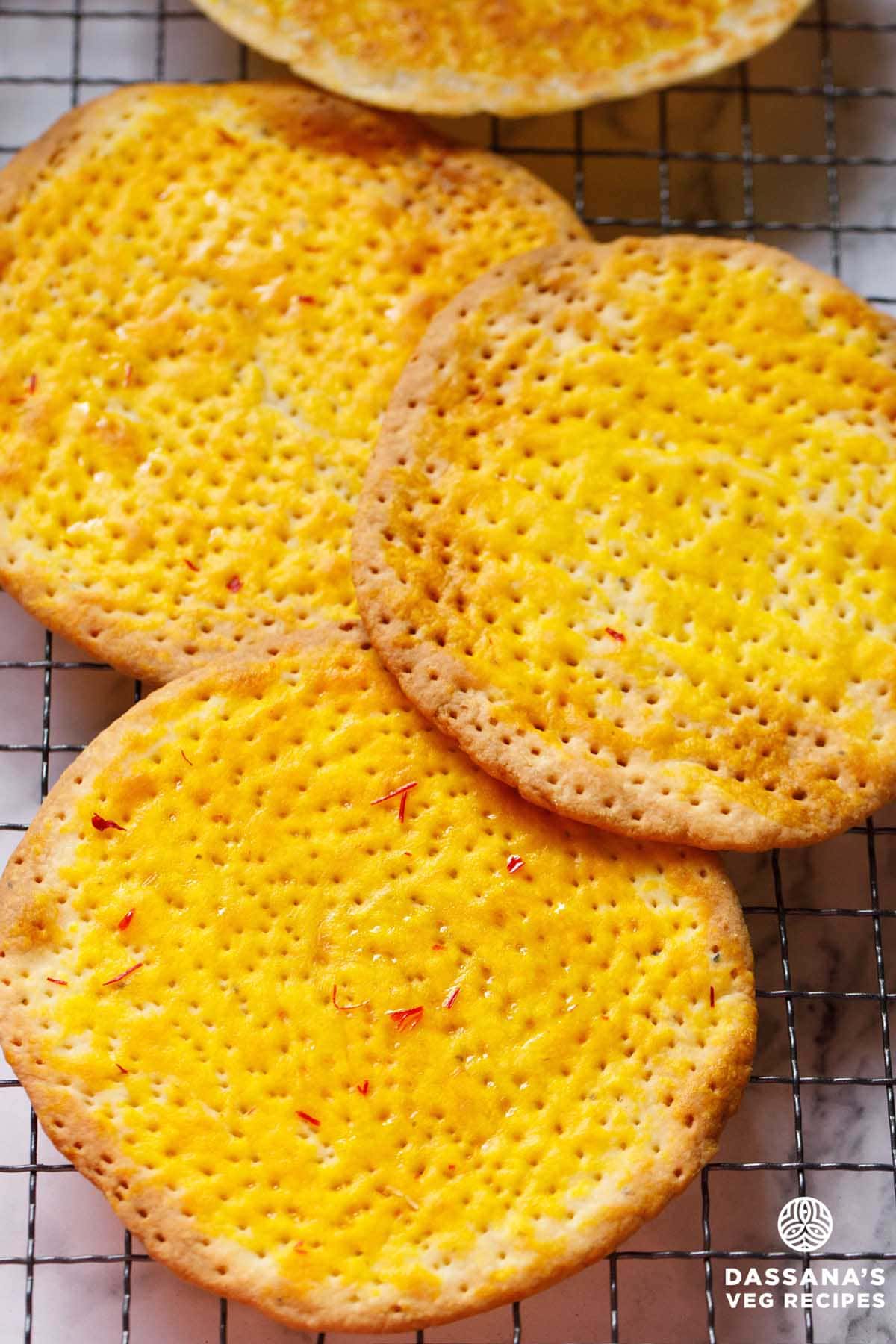

About Sheermal
Sheermal, also spelled Shirmal, is a traditional leavened bread with Persian roots and a key part of Awadhi cuisine. The name derives from the Persian words ‘sheer’ (milk) and ‘malidan’ (to rub or knead), meaning ‘milk-rubbed’ or ‘milk-kneaded.’
This saffron-flavored Sheermal Recipe is commonly prepared and enjoyed in regions like Kashmir and Lucknow. Infused with the aromas of cardamom, kewra water, and desi Ghee, it is a rich, fragrant bread often referred to as Sheermal Roti or Sheermal Naan.
Unlike everyday Indian breads like Roti or chapati, making the regional Shirmal requires significant time and effort. Basically it is an enriched milk bread that needs a little patience to prepare.
Sheermal Recipe comes in 2 variations: salty and sweet. The salty version has a faint sweetness and this is what I share here.
The sweet version includes more sugar and can be topped with slivered nuts, raisins, or poppy seeds before baking.
Sheermal can be made with a leavened or an unleavened dough. To leaven the dough, yeast or baking soda/baking powder is used.
Although this recipe does not include any leavening ingredient, it still makes for a rich and soft textured bread. The milk and ghee contribute to the softness of the dough and also help create a flaky texture.
The Shirmal dough, enriched with milk and melted ghee, must be kneaded patiently in batches until it reaches a soft, fudge-like consistency, similar to Mawa (Khoya) or khoya (dried milk solids).
Sheermal Bread can be baked in an oven or cooked on a skillet (tawa). The baked version achieves a crispy, flaky texture akin to a delicate cookie, while the skillet version combines soft and crispy elements.
Traditionally prepared in a tandoor like Naan, home ovens can be used at their highest temperature of 230 to 280 degrees Celsius (450 to 535 degrees Fahrenheit) for similar results.
Step-by-Step Guide
How to make Sheermal
Make Dough
1. In a mixing bowl, first mix 2¼ cups all-purpose flour (281 grams), ¼ teaspoon salt and ½ teaspoon green cardamom powder. Set aside.
I have not used any leavening ingredient in the bread. For a slightly more softer and airy texture, add about ½ teaspoon of baking powder at this point.
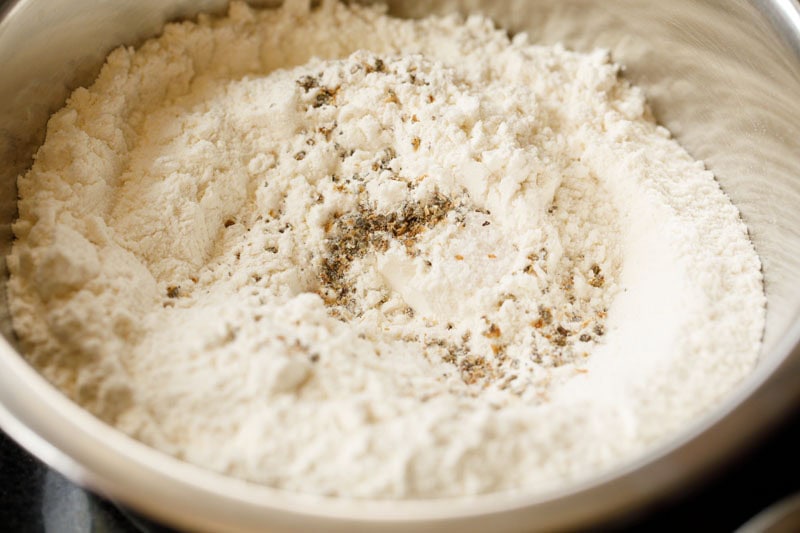

2. Next, take the 1 teaspoon sugar in a small saucepan.
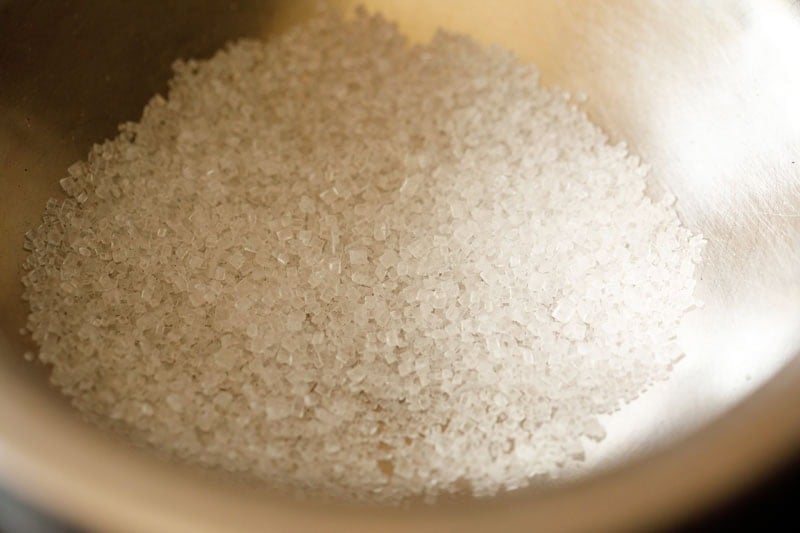

3. Pour 1 cup milk in the same saucepan. Heat until the milk becomes warm and the sugar dissolves. Stir often so that the sugar dissolves.
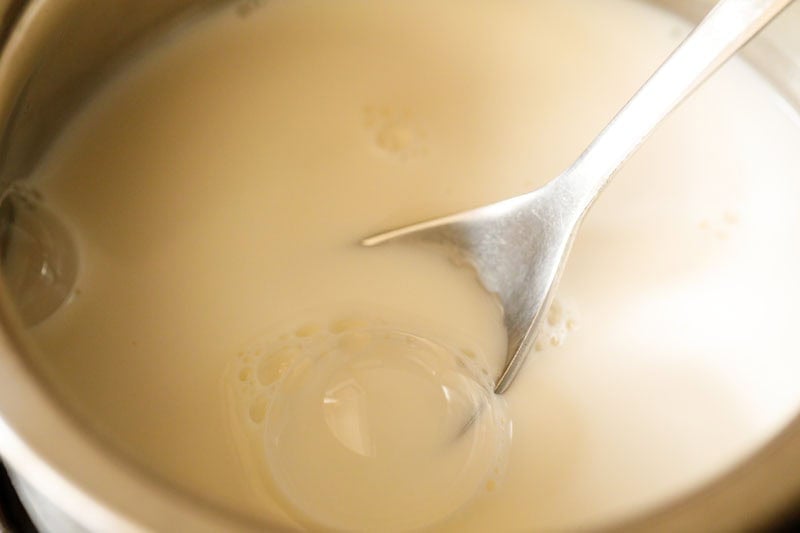

4. The milk must be warm and not hot. Add this warm milk in portions to the flour.
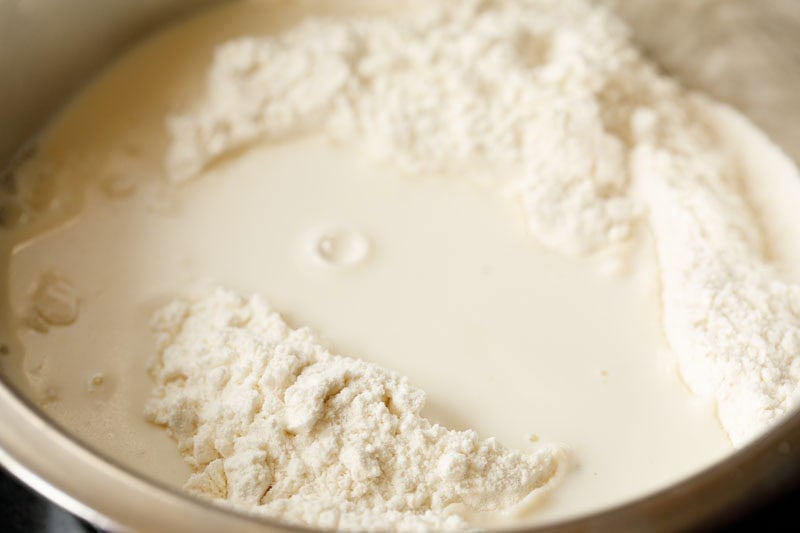

5. First, mix with a spoon and then begin to knead.
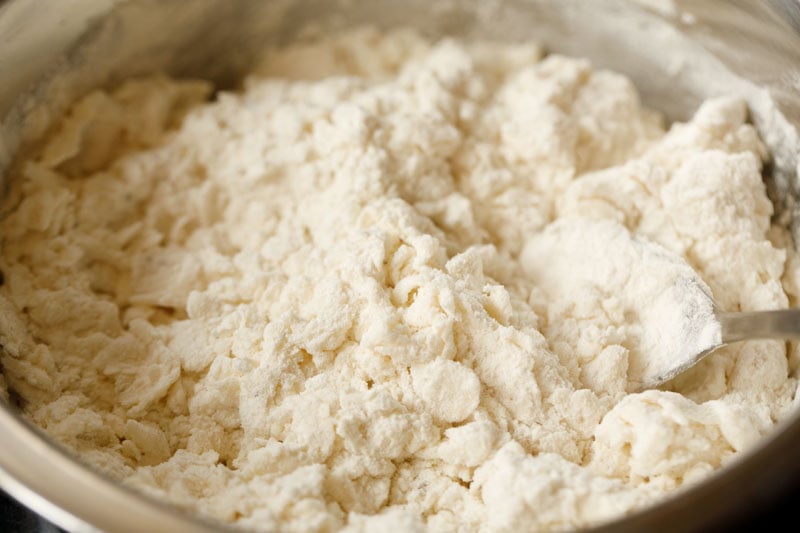

6. Keep adding milk in portions and continue to knead.
Knead to a smooth, supple and soft dough. If dough is dry or floury, add 1 to 2 tablespoons warm milk. If it is sticky, add in some flour and knead again.
You don’t need to use all of the milk while kneading the dough. Once the dough becomes soft and pliable, stop adding the milk. The amount of milk required will depend on the quality and texture of the flour that you use.
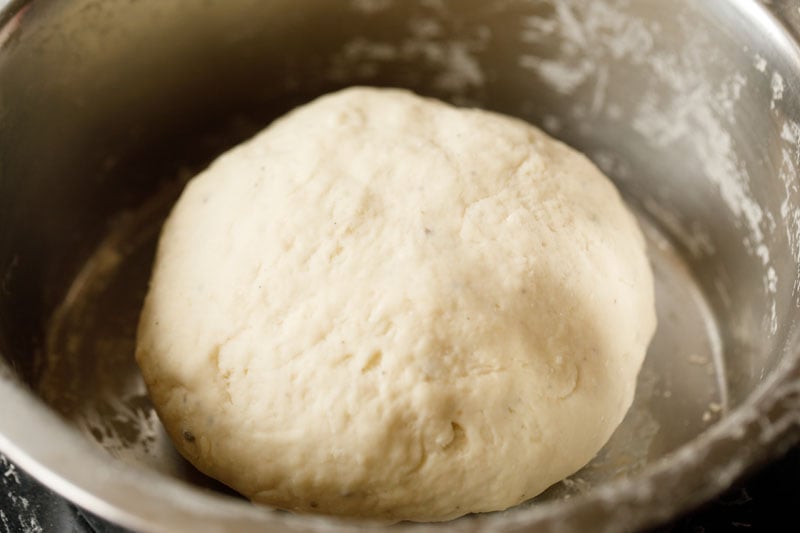

7. Cover the dough with a moist kitchen towel and let it rest for 15 minutes.
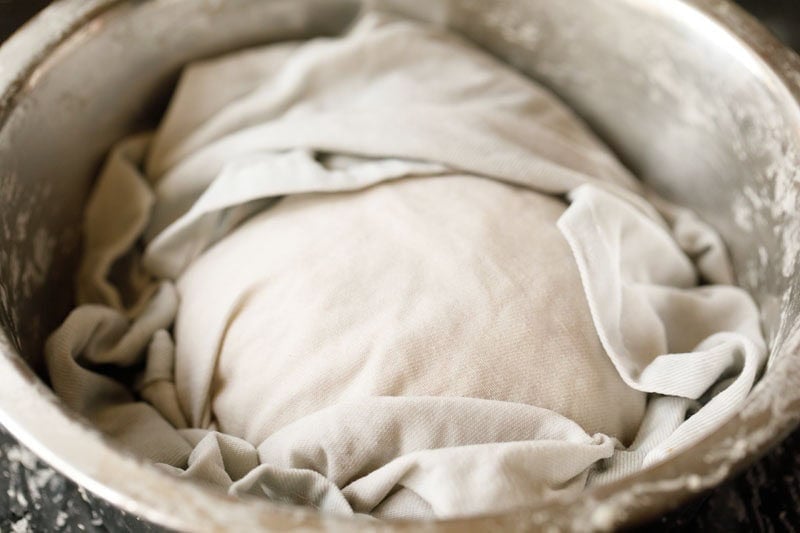

Make Saffron Milk
8. Crush 25 to 30 saffron strands and mix it with 3 tablespoons warm milk. Set this saffron milk aside.
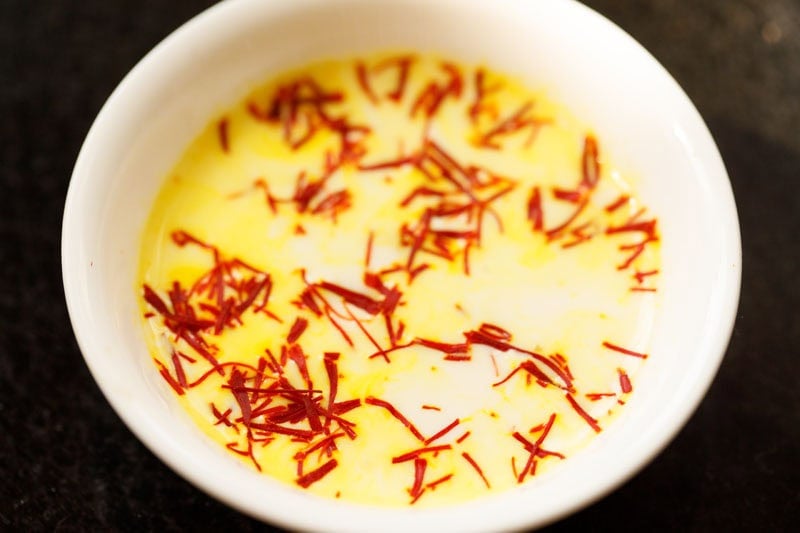

Melt Ghee
9. Melt 100 grams ghee in a small frying pan and set aside. Do not make the ghee very hot.
After melting, you should get ½ cup of the melted ghee.
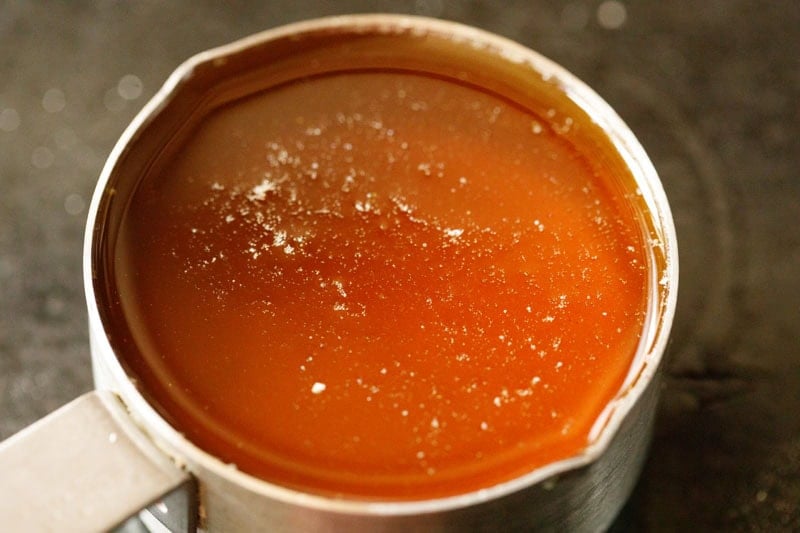

Add Melted Ghee To Dough
10. After the dough has rested for 15 minutes, add 1 tablespoon kewra water (pandanus water) and 2 to 3 tablespoons of the warm melted ghee.
The melted ghee must be warm when you add it to the dough.
Note that kewra water is different than kewra essence which is much more concentrated and intense. If using kewra essence add about ¼ to ½ teaspoon or a few drops, adjusting the amount depending on its concentration.
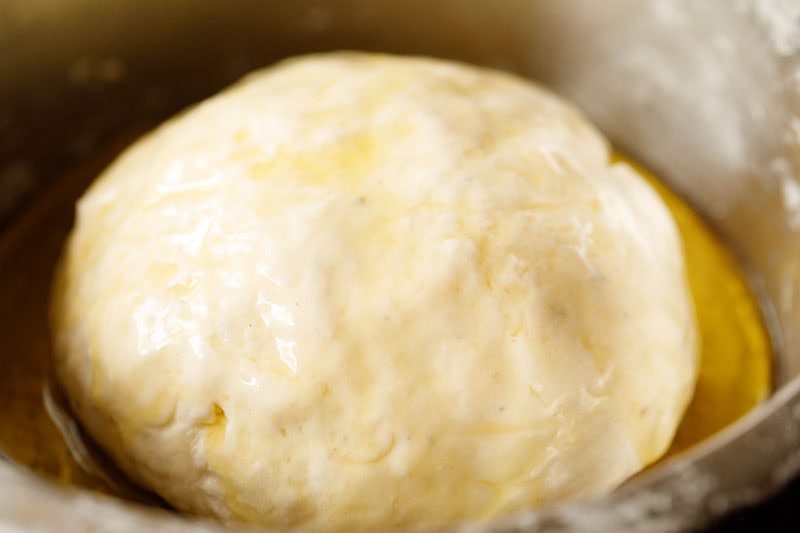

11. Press your fingers into the dough to create indents and mix the ghee with the dough. Knead the dough so that the ghee is evenly mixed and absorbed into the dough.
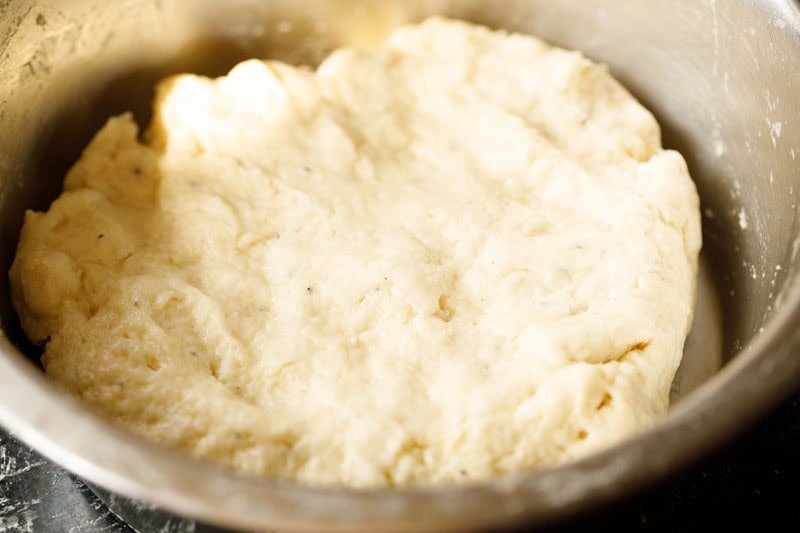

12. Again, poke the indents on the dough with your fingers and add 2 to 3 tablespoons melted warm ghee.
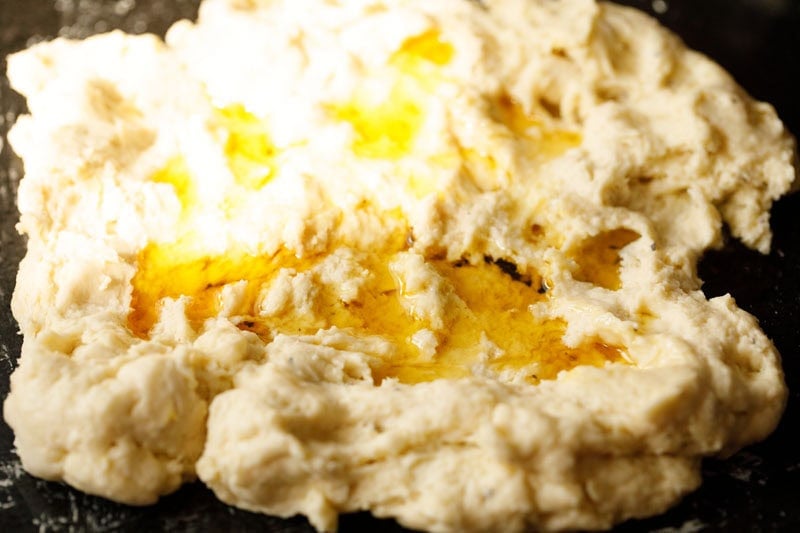

13. Continue to mix and knead. Stretch the dough while kneading. Knead until all the ghee gets incorporated into the dough.
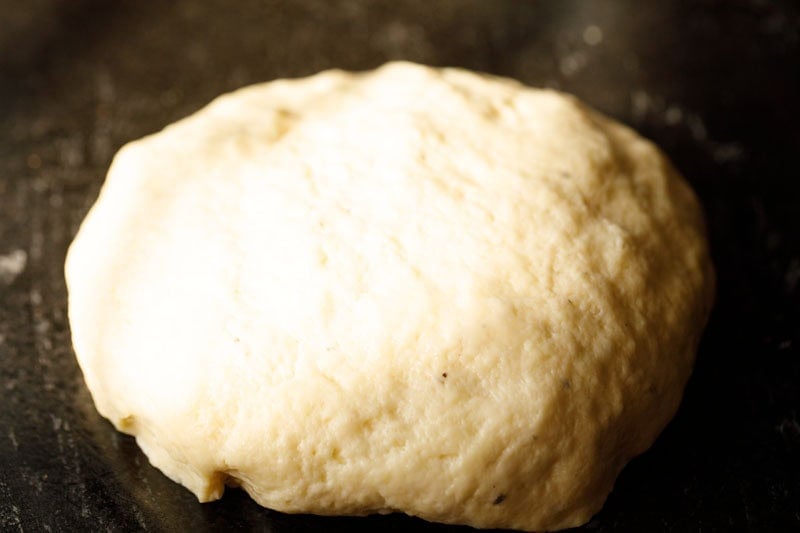

14. Repeat and use up all the ghee by creating indents and adding 2 to 3 tablespoons of the ghee at a time, mixing it with the dough and kneading until it is absorbed.
Incorporating the melted ghee in the dough takes time. So, be patient as you have to do this method in parts, one at a time.
Do not add all the ghee at once. It will become too difficult and strenuous for you to knead the dough like this.
Go slowly and knead until the ghee is incorporated completely. You have to work in batches while doing so.
Add a few tablespoons of ghee in batches and knead, until all of it is absorbed into the dough.
Keep in mind the dough will have a soft fudge like texture – like well-kneaded mawa or khoya.
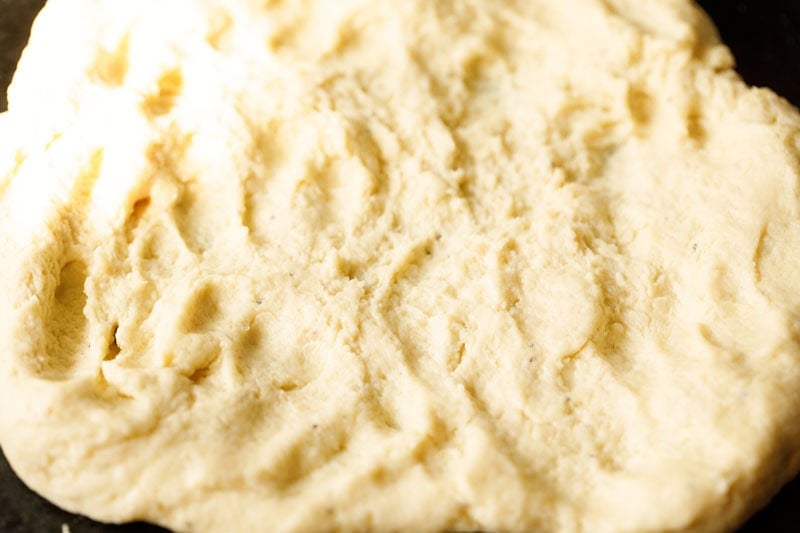

15. You will get a super soft, smooth dough. Cover with a moist kitchen towel and rest the dough for 10 to 12 minutes.
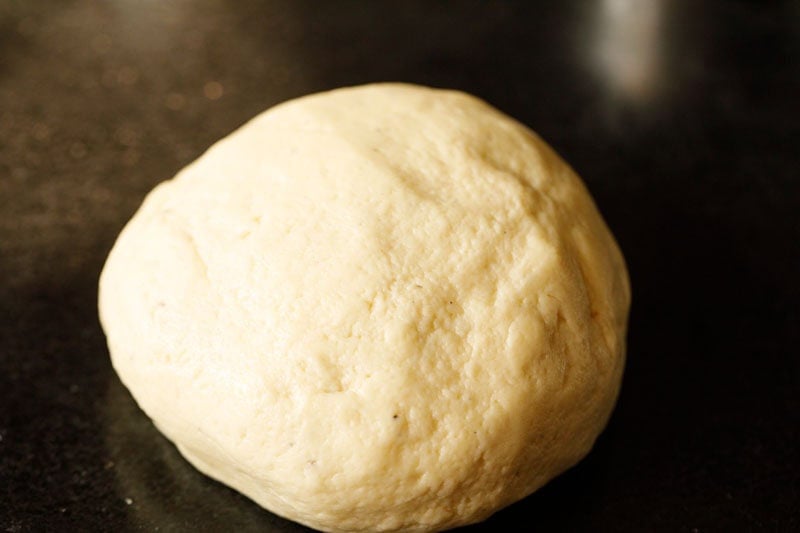

Assemble & Roll
16. Now, portion and form 8 equal-sized balls from the dough.
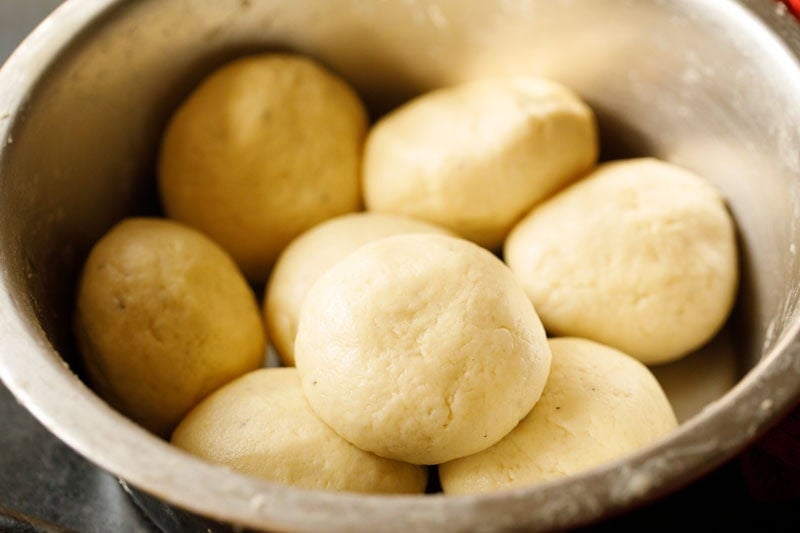

17. Cover with a moist kitchen towel and rest for 10 to 12 minutes.
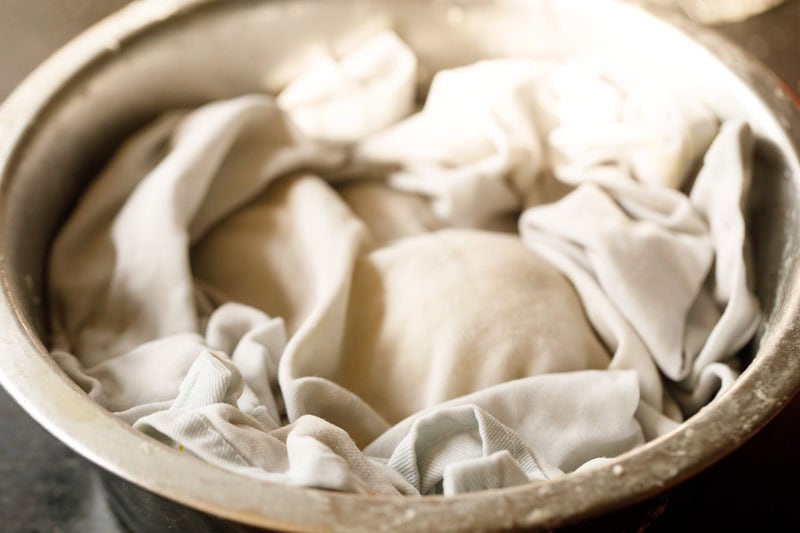

18. Sprinkle some flour on your work surface and on a dough ball. Roll each dough ball to 6 to 7 inches circle or disc lightly sprinkling with flour if required.
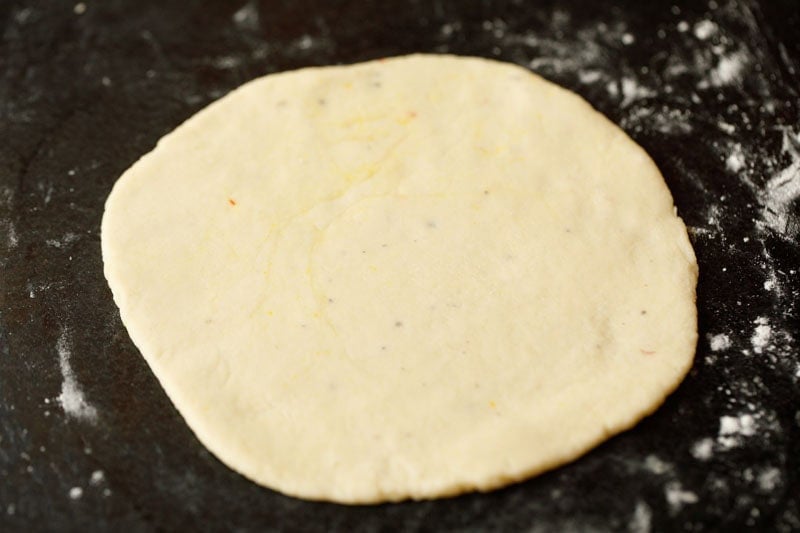

19. Prick or dock the rolled dough with a fork, which prevents it from puffing and keeps the bread flat. It also helps to cook the bread evenly.
These tiny holes also allow the saffron milk and melted ghee that is brushed on top later, to seep a little, thereby enhancing the flavor and taste.
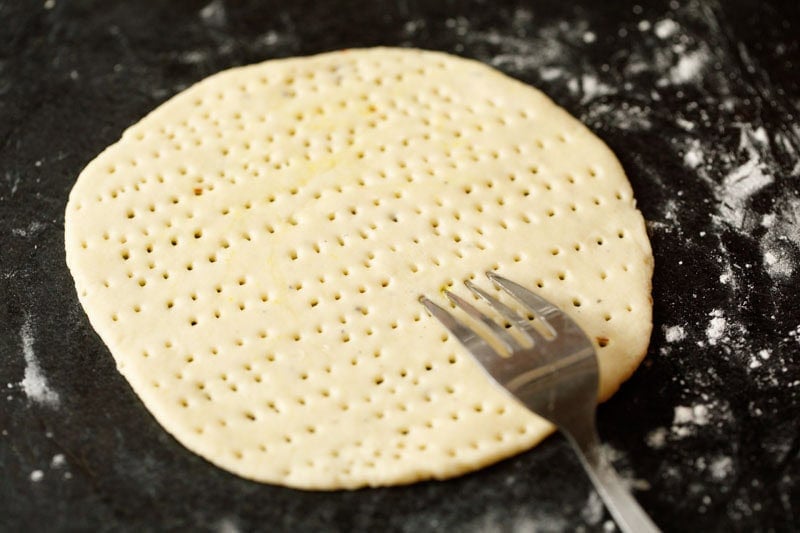

Make Sheermal Roti On Skillet/Pan
20. Heat a skillet, frying pan or tawa (griddle) on medium-low or medium heat. Place the rolled dough on it.
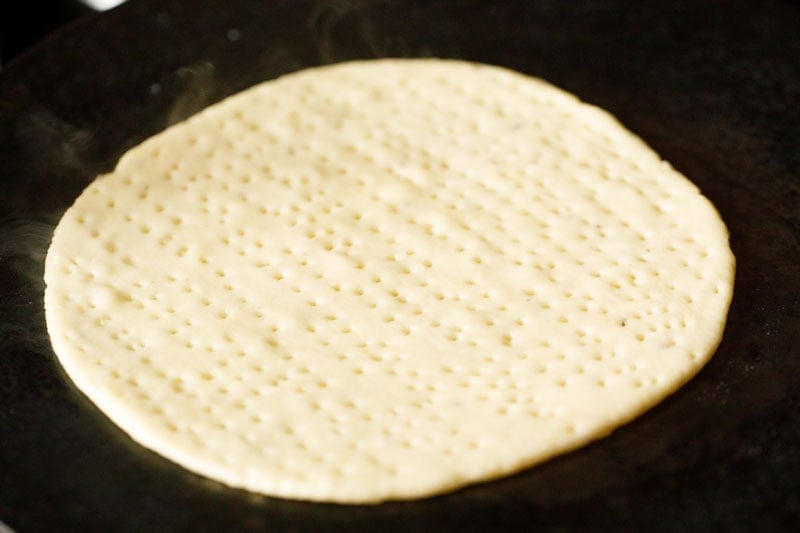

21. Cover with a lid and let the bottom cook.
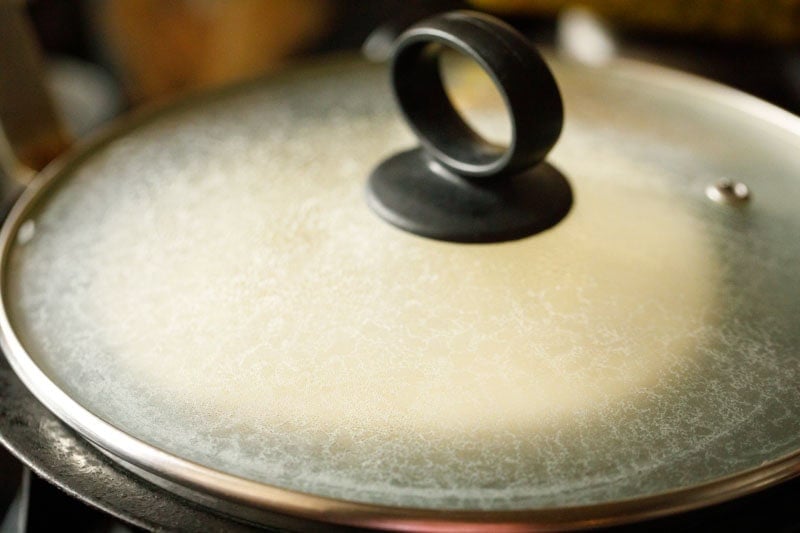

22. Check after 1½ to 2 minutes and when the bottom crust has golden blisters, flip gently.
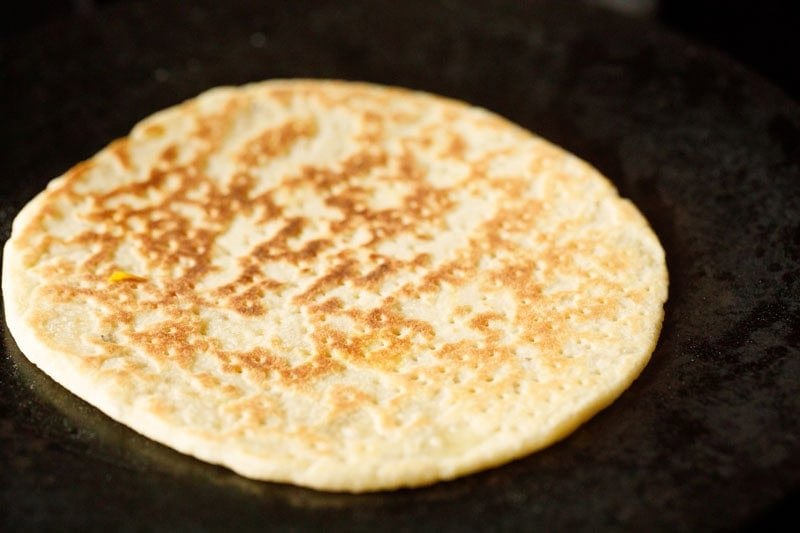

23. Cook the second side until golden without covering with a lid. Press the edges with a spatula so that the edges also get cooked well.
Ensure that both sides of the sheermal roti are cooked properly. You only need to flip the roti twice. Flipping it many times can make it chewy and hard.
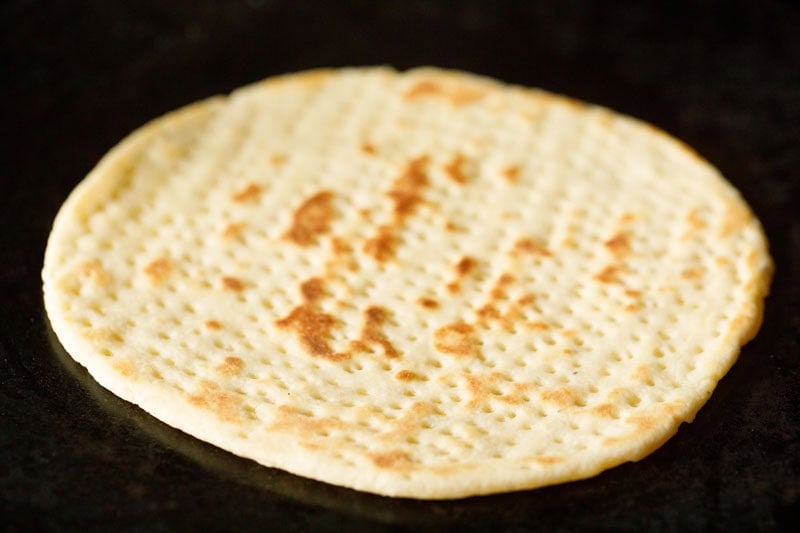

24. Remove and using a brush or spoon spread evenly ½ to 1 teaspoon each of the prepared saffron milk and melted ghee on the Sheermal Roti.
Do not add too much of the saffron milk as this can make the Shirmal soggy from top.
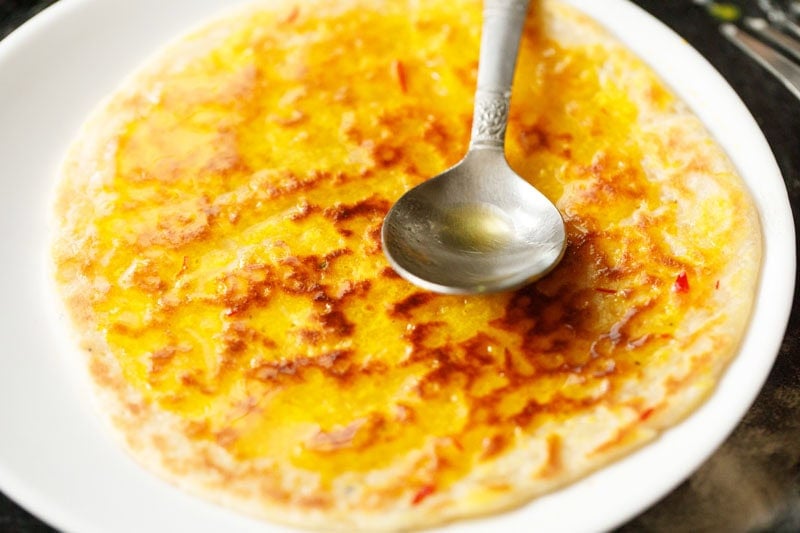

25. Similarly, make the remaining Shirmal roti in batches. Place the saffron milk and ghee brushed sides of the two prepared rotis facing and touching each other while storing.
Keep them covered in a moist cotton kitchen towel.
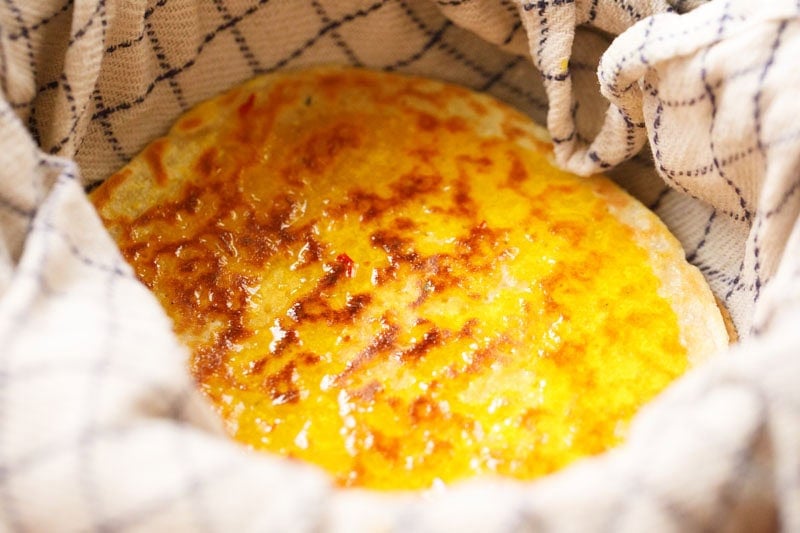

Bake Shirmal
26. Preheat oven at 230 degrees C/445 degrees F for 20 minutes, if you plan to bake these breads. Ensure to heat both upper and bottom rods of your oven.
Place on a greased baking tray or a baking tray lined with parchment.
You can either grease the tray with the melted ghee or softened unsalted butter.
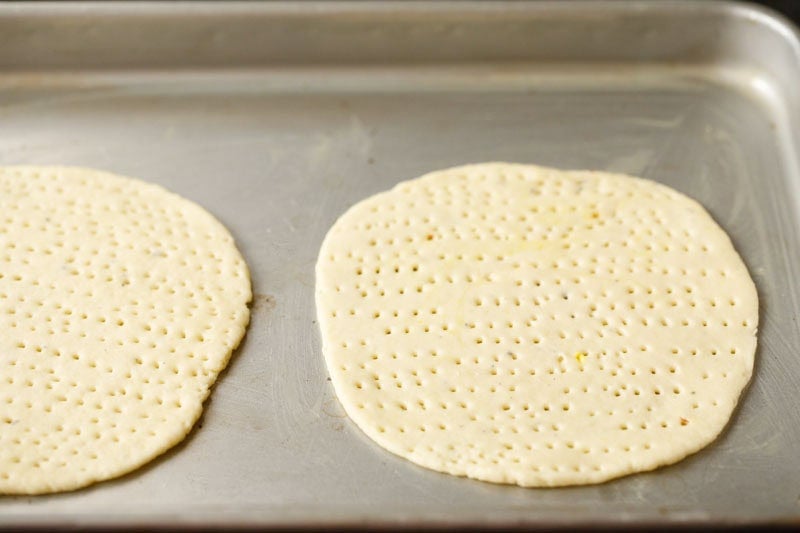

27. Place the tray in the preheated oven.
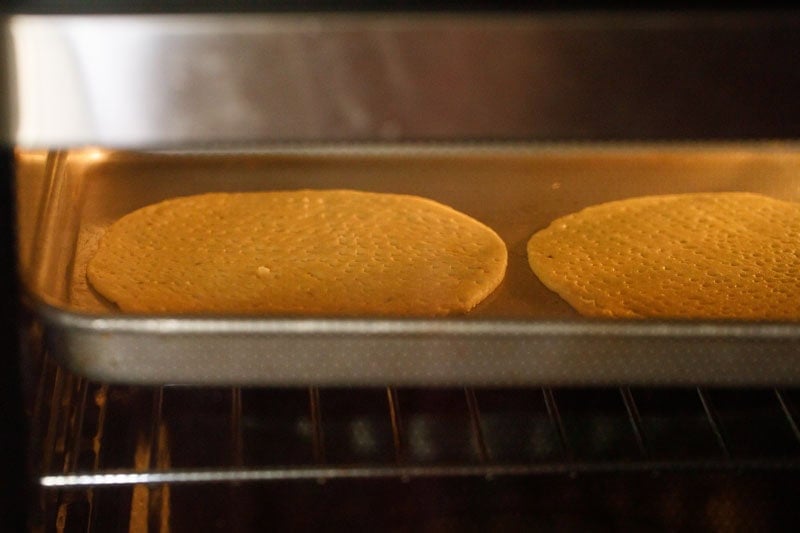

28. Bake until edges are golden for about 12 to 15 minutes. You can opt to flip midway while baking.
Once baked well, remove tray from oven.
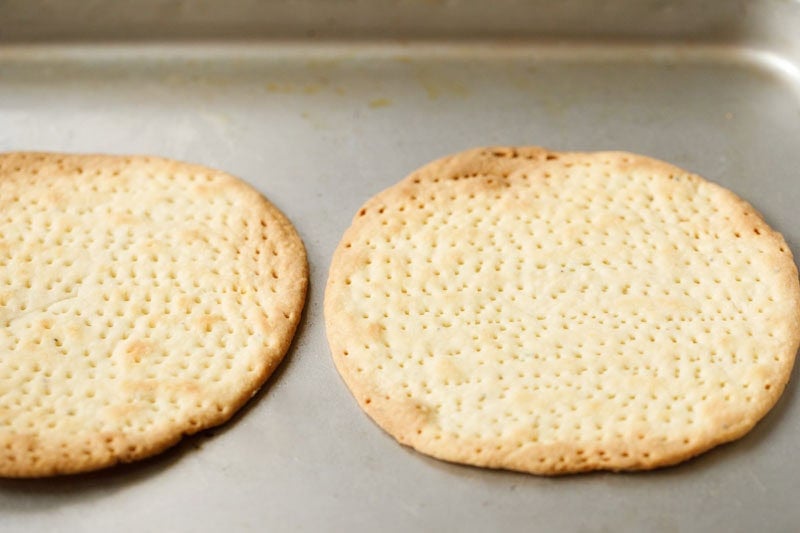

29. With the help of tongs or a spatula, place the bread on a wired rack.
Brush or spread the baked Sheermal bread with the saffron milk. Next, spread or brush with melted ghee.
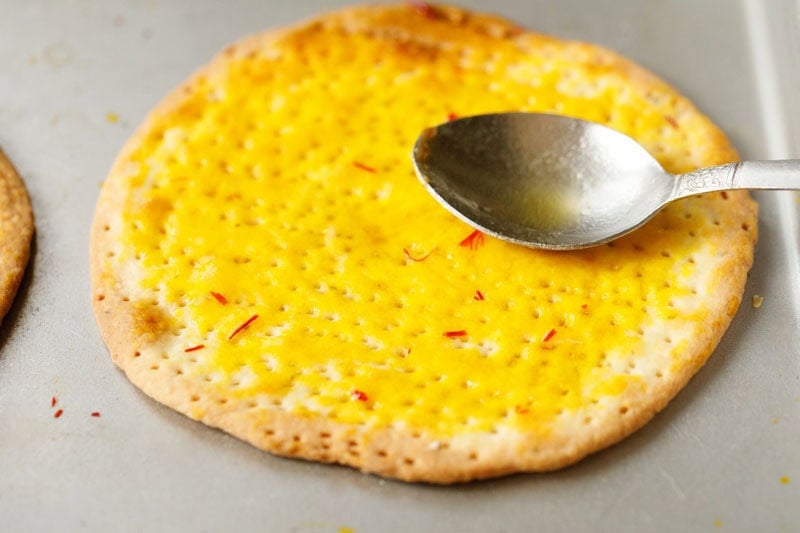

30. You can place the saffron milk and ghee brushed sides of the two breads facing and touching each other while storing.
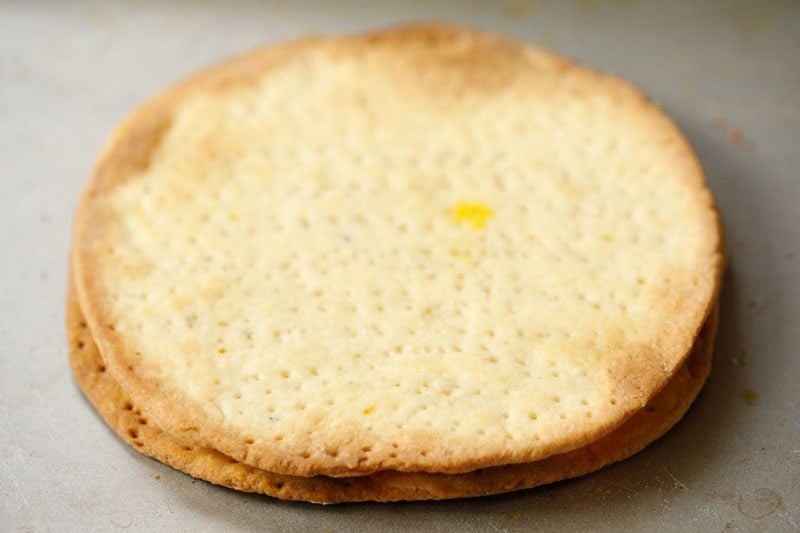

31. Keep the breads covered in a moist kitchen towel. Repeat the baking, if you have a small oven or small-sized trays.
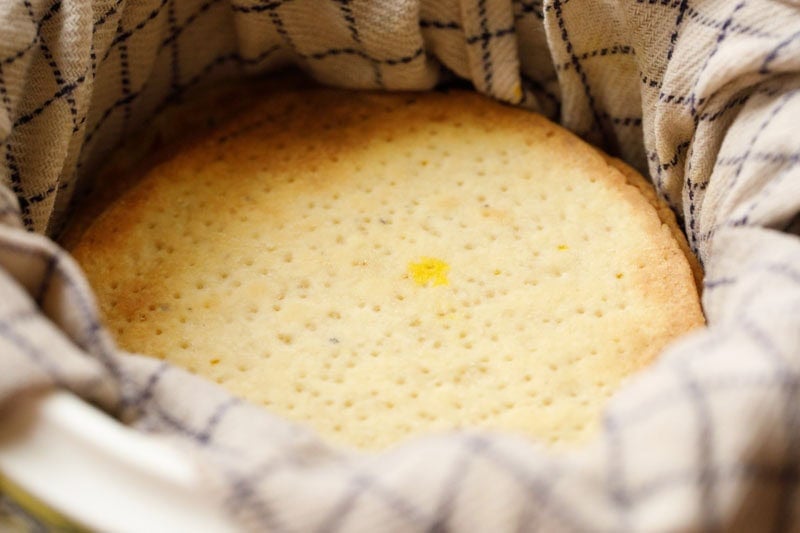

32. Serve Sheermal with your favorite vegetarian curries or kababs or chai.
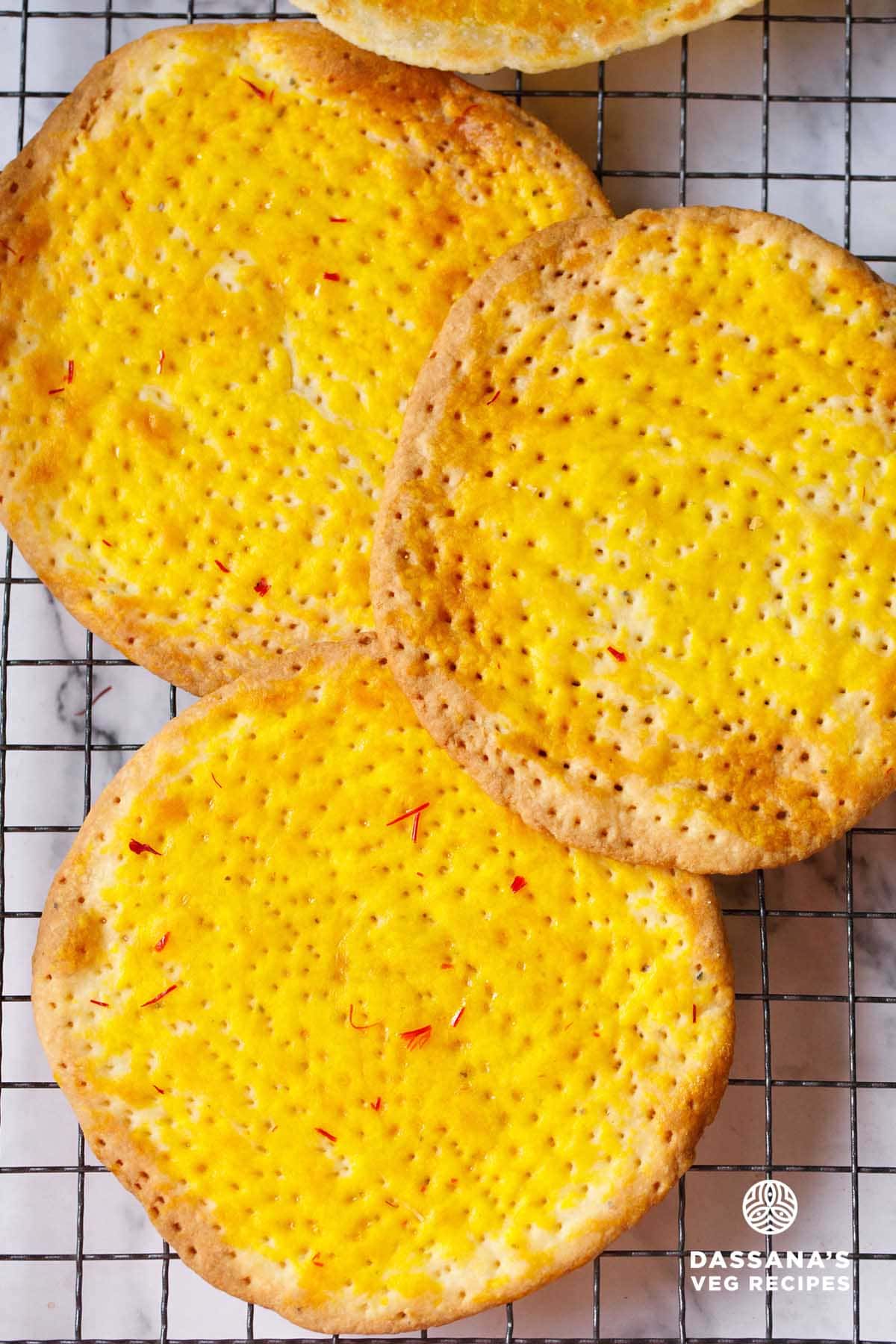

Serving & Storage Suggestions
Sheermal Roti pairs wonderfully with beverages like Kahwa or the everyday Indian Chai. It’s particularly delightful with a simple Mint Tea.
It also complements rich, creamy curries or gravies such as Malai Kofta, Shahi Paneer, Paneer Korma and Paneer Butter Masala.
You could also opt to serve these decadent breads with snacks like Veg Kabab or Shami Kabab (vegetarian).
To store leftovers, wrap the Sheermal Bread in a cotton napkin and place it in an airtight container before refrigerating.
Note that the ghee in the Sheermal Recipe solidifies when chilled, making it hard. To restore its softness, gently warm the bread on a tawa or skillet. Alternatively, you can reheat it in the oven before serving.
Expert Tips
- Kneading: While kneading, the difficult part is to incorporate melted ghee in the dough. Go slowly and knead, knead and knead, until the ghee is incorporated completely. You have to work in batches while doing so. Add a few tablespoons of ghee in batches and knead, until it is absorbed into the dough.
- Use of Ghee: Since this bread has a lot of ghee in it, make sure the ghee is fresh and not rancid or bitter. The best flavor comes from desi ghee or homemade ghee.
- Texture of Dough: Keep in mind the dough will have a soft fudge like texture – like well-kneaded mawa or khoya.
- Sweet Bread: For sweet version, add 5 to 6 tablespoons sugar to the warm milk to make the dough. Additionally top with nuts, raisins, white poppy seeds before baking.
- For Baking: These are traditionally made in tandoor. Our home ovens are not so hot, so you could use a temperature of 240 to 280 degrees Celsius (465 to 535 degrees Fahrenheit), but lower the baking time accordingly. You can opt to flip midway while baking. Ensure to heat both upper and bottom rods of your oven.
FAQs
Sheermal has a mildly sweet and rich flavor, infused with the fragrant essence of saffron, cardamom, and kewra. Its texture is soft and flaky on the inside, with a slightly crispy exterior when baked.
Sheermal Roti is believed to have been introduced by Persian influences during the Mughal era in India. It became an integral part of Mughlai and Awadhi cuisines, particularly in regions like Lucknow and Kashmir.
A traditional Sheermal Recipe may include eggs to enhance softness, but many versions, including vegetarian adaptations like the one I have shared on this post, exclude eggs and rely on milk and ghee for richness.
While both Shirmal and Taftan are traditional Persian-origin breads, Sheermal Bread is mildly sweet and flavored with saffron and cardamom, whereas taftan is usually savory and often incorporates yogurt and sometimes dried fruits for a richer taste. Taftan is also fluffier compared to the denser texture of its counterpart.
More Traditional Indian Breads To Try!
Please be sure to rate the recipe in the recipe card or leave a comment below if you have made it. For more vegetarian inspirations, Sign Up for my emails or follow me on Instagram, Youtube, Facebook, Pinterest or Twitter.
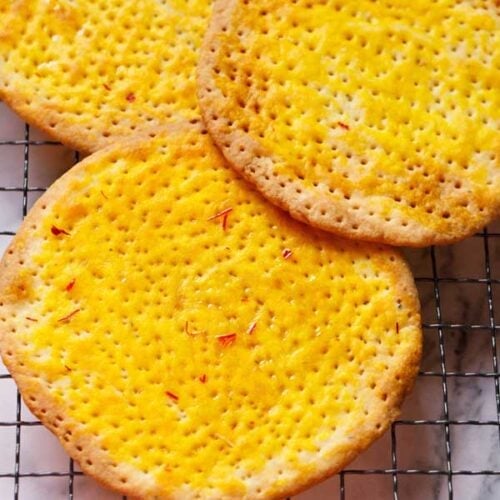

Sheermal Recipe (Without Yeast)
Popular in Awadhi & Mughlai cuisines, Sheermal or Shirmal is a soft, mildly sweet, saffron-flavored, enriched leavened bread baked in tandoor or on a griddle. Sheermal recipe originates from the Mughlai cuisine, with strong influences from Persia. The rich dough is made with white flour, milk, cardamom, sugar, salt & lots of ghee. The baked Sheermal Roti is brushed with saffron milk, melted ghee or butter and typically served warm with rich spiced gravies or as a tea-time snack.
Prep Time 25 minutes
Cook Time 30 minutes
Resting Time 35 minutes
Total Time 1 hour 30 minutes
Prevent your screen from going dark while making the recipe
Make dough
In a mixing bowl, first mix the all-purpose flour, salt and cardamom powder.
Next take the sugar and milk in a small saucepan.
Heat until the milk becomes warm and the sugar dissolves. Stir often so that the sugar dissolves.
Add this warm milk in portions to the flour.
Mix and then begin to knead.
Keep on adding milk in portions and continue to knead.
Knead to a smooth and soft dough. If dough is dry or floury, add 1 to 2 tablespoons warm milk. If it is sticky, add in some flour and knead again
- Keep in mind that you may not need to use all of the milk while kneading the dough. Stop adding milk, once the dough turns soft, smooth and pliable.The amount of milk needed will vary depending on the quality and texture of the flour that you are using.
Cover the dough with a moist kitchen towel and let it rest for 15 minutes.
Adding melted ghee to dough
Melt 100 grams of ghee in a small frying pan and set it aside. Do not make the ghee very hot.
It must be warm when you add it to the dough.
After the dough has rested for 15 minutes, add kewra water and 2 to 3 tablespoons of the warm melted ghee.
Press your fingers into the dough to create indents and mix the ghee with the dough. Knead nicely so that the ghee is evenly mixed and absorbed into the dough.
Again poke the indents with your fingers on the dough and add 2 to 3 tablespoons of melted warm ghee.
Continue to mix and knead. Stretch the dough while kneading. Knead until the ghee gets incorporated into the dough.
Repeat and use up all the ghee by creating indents and adding 2 to 3 tablespoons of the ghee at a time, mixing ghee with dough and kneading until the ghee is absorbed. You will get a super soft and smooth dough.
Cover with a moist kitchen towel and rest the dough for 10 to 12 minutes.
Assembling and rolling
After the dough has rested, portion and form 8 equal sized balls from the dough.
Cover with a moist kitchen towel and rest again for 10 to 12 minutes.
Sprinkle some flour on your work surface and on the dough ball.
With a rolling pin, roll each dough ball to 6 to 7 inches circle, sprinkling flour lightly if needed.
Prick or dock the dough with a fork.
Making Sheermal on a skillet/pan/griddle
Heat a skillet, frying pan or tawa (griddle or a flat skillet) to medium-low or medium heat.
Place the rolled dough on it.
Cover with a lid and let the bottom of the sheermal roti cook.
Check after 1½ to 2 minutes and when the bottom crust has golden blisters, flip gently.
Cook the second side until golden without covering it with a lid. Press the edges with a spatula so that the edges also get cooked evenly.
Remove and brush first with the prepared saffron milk and then with the melted ghee.
Similarly make the remaining breads in batches on the skillet or tawa.
Place the saffron milk and ghee brushed sides of two breads facing and touching each other while storing.
Keep them covered in a moist cotton kitchen towel or a moist cotton napkin.
Baking Shirmal
Preheat oven at 230 degrees Celsius/445 degrees Fahrenheit for 20 minutes, if you plan to bake these breads.
Place on a greased baking tray or a baking tray lined with parchment.
Place the tray in the preheated oven and for about 12 to 15 minutes or until the edges are golden.
Once baked well, remove the baking tray from oven.
With the help of tongs or a spatula, place the sheermal bread on a wired rack.
Brush evenly with the saffron milk. Next brush with melted ghee or softened butter.
Keep the sheermal roti covered in a moist kitchen towel.
Repeat the baking if you have a small oven or small-sized trays.
Serving & Storage Suggestions
Sheermal Roti can be paired with kahwa, chai or even a vegetarian korma, paneer korma, shahi paneer, paneer butter masala or vegetable kabab.
Refrigerate leftover sheermal bread wrapped up in a cotton napkin in an air-tight container.
The ghee in the sheermal will become solid after refrigeration leading to the bread become hard. So lightly roast the sheermal bread on a tawa/skillet until warm. You can also warm these breads in the oven before serving.
- Flour: Sheermal is traditionally made with all-purpose flour which gives it the best texture. However, for a slightly healthier option, you could add in a small amount of whole wheat flour. But note that the texture will differ in this scenario.
- Milk: Sheermal is basically a milk based flatbread. So as the name suggests, milk is an essential ingredient. Thus do not skip on it. For a more richer version, you can use half-half of milk and cream (malai).
- Sweeteners: Usually sugar is added to give the bread a light sweetness. This recipe makes for a Sheermal roti that is mildly sweet. If you prefer a more sweeter bread, add more sugar (about 5 to 6 tablespoons) to the warm milk.
- Fats: Ghee is the preferred choice of fat. Use the same amount as mentioned in this recipe. It helps in making the texture soft and gives a really good flavor.
- Patience: Making Sheermal requires both time and patience. Set aside enough time to prepare this rich and royal bread. It is not a recipe that you can rush through.
- Kneading: The challenging part while kneading the dough, is incorporating the melted ghee into it. Go slowly adding ghee in small batches, mixing it first and then kneading until it is fully absorbed into the dough. Remember the dough should have a soft fudge like texture.
- Saffron: Soaking saffron strands in warm milk releases its color and flavor in the milk. Brushing the Shirmal bread with this saffron milk gives it a lovely aroma and color.
- Leavening Ingredients: For a slightly more softer and airy texture, add about ½ teaspoon of baking powder to the dough.
- Optional Toppings: You could brush some rose water or kewra water on the baked breads. Additionally sprinkle some slivered almonds or pistachios and raisins for a royal touch.
- Texture: Make a note that oven baked Sheermal has crispy, flaky texture like that of a flaky cookie. The griddle/tawa or pan cooked bread will be soft as well as crispy.
Nutrition Facts
Sheermal Recipe (Without Yeast)
Amount Per Serving
Calories 302 Calories from Fat 162
% Daily Value*
Fat 18g28%
Saturated Fat 11g69%
Polyunsaturated Fat 1g
Monounsaturated Fat 5g
Cholesterol 48mg16%
Sodium 88mg4%
Potassium 96mg3%
Carbohydrates 30g10%
Fiber 1g4%
Sugar 3g3%
Protein 5g10%
Vitamin A 59IU1%
Vitamin B1 (Thiamine) 0.3mg20%
Vitamin B2 (Riboflavin) 0.2mg12%
Vitamin B3 (Niacin) 2mg10%
Vitamin B6 0.04mg2%
Vitamin B12 0.2µg3%
Vitamin C 0.2mg0%
Vitamin D 0.4µg3%
Vitamin E 0.04mg0%
Vitamin K 0.2µg0%
Calcium 50mg5%
Vitamin B9 (Folate) 65µg16%
Iron 2mg11%
Magnesium 13mg3%
Phosphorus 75mg8%
Zinc 0.4mg3%
* Percent Daily Values are based on a 2000 calorie diet.

Source link